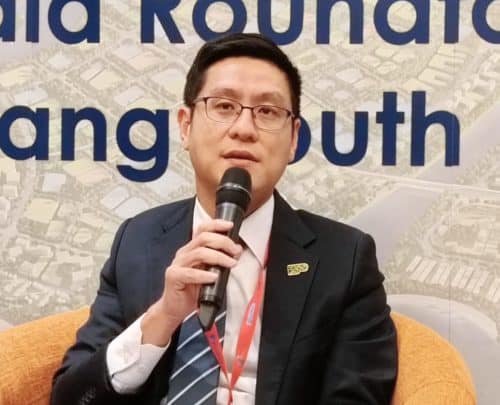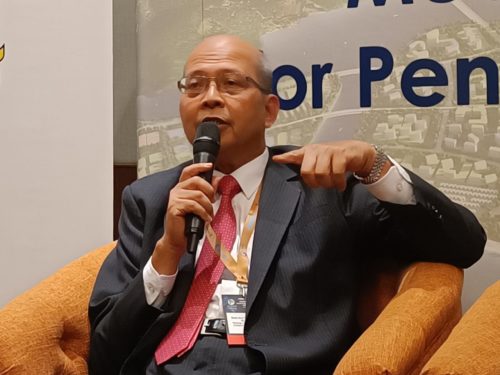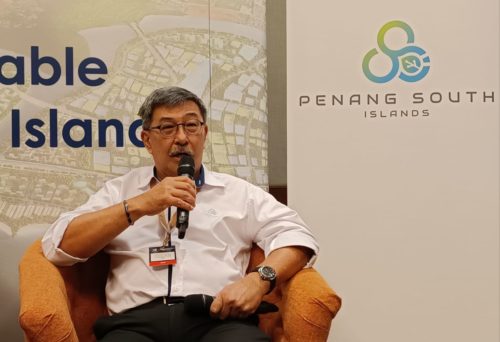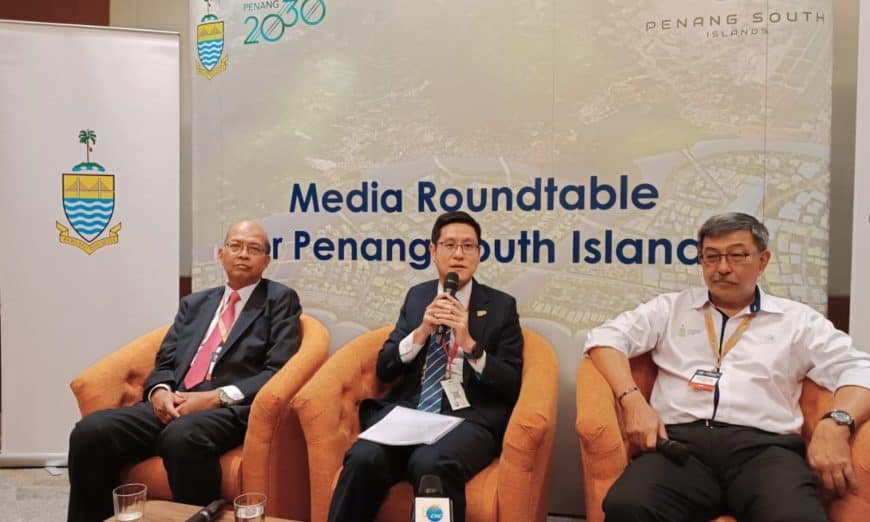THE Penang government is confident that its new Environmental Impact Assessment (EIA) report for the Penang South Islands (PSI) project will be approved by the Department of Environment (DoE), according to state Transport and Infrastructure Committee chairman Zairil Khir Johari.
He told reporters during a Media Roundtable for Penang South Islands at Setia SPICE Convention Centre today that a meeting between them and DoE had been fixed on Oct 4.
Zairil said the new EIA report retained 99% of the first EIA’s content, making only slight amendments, including starting the project on reclaiming Island A first instead of Island B.
The proposed PSI project involves the creation of three artificial islands (Island A, Island B and Island C), at the south-end of Penang island, measuring a total of 4,500 acres in land size.
While the reclamation project is for industrial development and housing needs, it is also mooted as a financial module for the Penang Transport Master Plan.

“Based on substance and merits, our new EIA should get approved. The new EIA did not differ much from the first EIA. This is a real technicality.
“Our original thinking was to do Island A and Island B together. We have now focused all our resources on A,” Zairil said.
Elaborating on why they reprioritised their focus, he said they want Island A to be a Silicon Island which can create jobs for the people.
“The first priority is to create jobs. Without jobs, who are we going to sell the houses to?
“PSI is basically a project for the future of Penang to create growth and sustainable development for the next 30 to 50 years.
“We don’t want PSI to be a real estate island. We want it (Island A) to be a catalytic island. Once you have high-paying value jobs on the island, everything else just naturally falls into place. There will then be residential, commercial, social and recreational activities.
“We can then monetise other areas, knowing Penang is a state that has no resources. These resources can then be used to fund infrastructure development,” Zairil explained.
He said that just as Penang was transformed after the introduction of the free industrial zone in the 70s until now, the PSI project would impact the future of the state in the next five decades.
Very importantly, he said the project would be ESG (environmental, social and governance) compliance, saying that these three key factors influence the decisions of today’s and tomorrow’s big companies.
Asked by a reporter if the people’s sentiments would be affected in the 15th general election if the PSI project falls through as it was included in the Pakatan Harapan’s manifesto, Zairil said he hoped not.
Last month, the High Court dismissed the Penang government’s leave application to initiate a judicial review after refusing a bid to extend time to allow proceedings to be brought to court.
“When we filed the case, it was actually to dispute on point of principle. When the court ruled against us, we resubmitted the EIA and made a little amendment,” Zairil said.

Also present were Penang Infrastructure Corporation Sdn Bhd (PICSB) chief executive officer Datuk Seri Farizan Darus and SRS Consortium project manager Szeto Wai Loong.
Farizan said the need for land reclamation in the state is because Penang has no more land for industrial development.
He said even land on the mainland, like in Batu Kawan, is almost sold out.
“Island A will be a catalyst for the development of Penang. If we fail on Island A, there is no way we can proceed with Island B and Island C. If we cannot create job opportunities, what is the point of creating residential or commercial or other activities?” Farizan said.

Szeto said the Island A reclamation would take eight to 10 years to complete and the total development of it would take about 20 years.
He said the total cost for Island A reclamation is RM10 billion.
He said if the EIA is approved, reclamation work will start in November or December.
Phase One of the project, he said, will focus on a green tech park in 2024, and any investor can start their construction in 2025 and the first factory is expected to be completed by end of 2026.
He said Island B would cater mostly to a commercial centre and housing development while Island C would cater to leisure and housing schemes.
Szeto also revealed that the 300 acres of land originally reserved on Island A for the construction of an extended Penang International Airport runway would now be used as the LRT depot.
He said Malaysian Airport Holdings Bhd (MAHB) had told him that the airport in Bayan Lepas has sufficient land for them to carry out its runway extension.
“We’ve done a lot of interaction with them and the LRT station has been finalised at the Penang International Airport in Bayan Lepas,” Szeto said.
Story by K.H. Ong
Pix by Law Suun Ting

